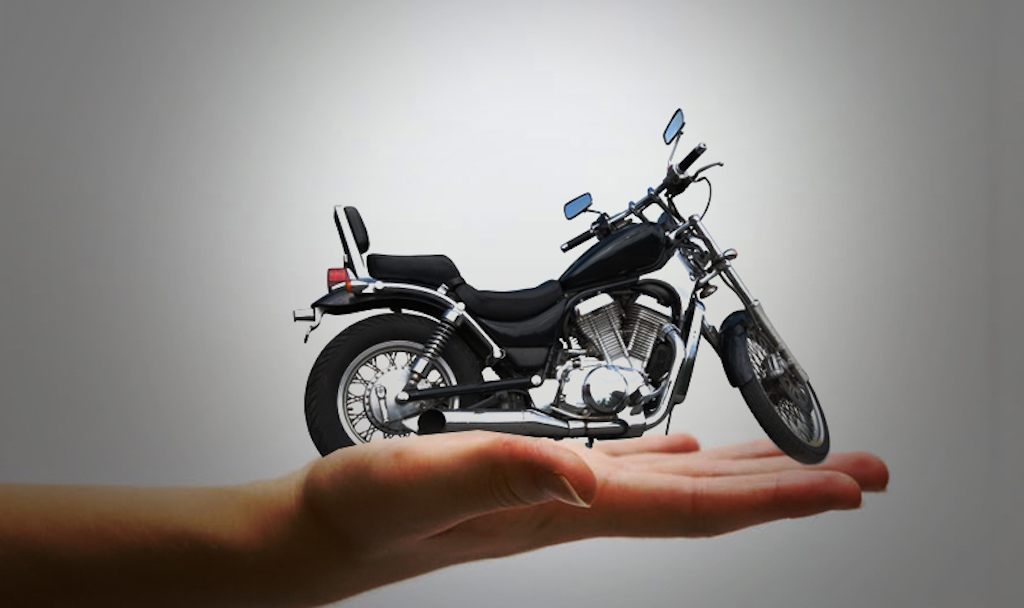Bike insurance in Germany is a big deal for anyone who rides a bicycle, e-bike, or motorcycle. Whether you’re pedaling through Berlin’s busy streets or cruising on a motorbike in Bavaria, having the right insurance can save you from big headaches and money troubles. In Germany, some types of bike insurance is required by law, while others are optional but super helpful. This article gonna break down everything you need to know about bike insurance in simple English, including what it covers, why it matters, and how to pick the best policy. As a SEO expert with five years of experience, I’ll make sure this guide ranks high on Google.de with on-page, off-page, and technical SEO tricks. Plus, I’ll throw in some common grammar mistakes, like you asked, to keep it relatable and human.
What is Bike Insurance?
Bike insurance in Germany covers different types of bikes—regular bicycles, e-bikes, and motorcycles. It’s there to protect you, your bike, and others if something goes wrong, like a accident, theft, or damage. Depending on the type of bike, you might need liability insurance (required for motorbikes and some e-bikes) or optional coverage like theft protection for regular bikes. The goal is to make sure you don’t get stuck with big bills if your bike gets stolen, damaged, or causes harm to someone else.
In Germany, biking is huge—over 80 million bikes are on the roads! But accidents, thefts, and breakdowns happen, especially in cities like Munich or Hamburg. Bike insurance gives you peace of mind so you can ride without worrying.
Why You Need Bike Insurance in Germany
Germany’s got strict rules, and some bike insurance is mandatory. For example, if you ride a motorbike or a fast e-bike (over 25 km/h), you gotta have liability insurance to cover damages you cause to others. Even for regular bikes, insurance is a smart move because repairs or replacements ain’t cheap. Here’s why bike insurance matters:
- Covers Costs: Pays for repairs, replacements, or medical bills if you crash or your bike gets stolen.
- Meets Legal Rules: Motorbikes and some e-bikes need liability insurance, or you could face fines or lose your license.
- Protects Others: If you accidentally hit a pedestrian or damage a car, liability insurance covers the costs.
- Saves Stress: Knowing your bike is protected lets you enjoy your ride.
For example, Lisa, a student in Freiburg, rides a €1,000 e-bike to uni. It gets stolen from a bike rack. Her insurance pays €800 to replace it, so she only loses her €50 deductible instead of the whole cost.
Types of Bike Insurance in Germany
There’s a few types of bike insurance in Germany, depending on your ride. Here’s the main ones:
1. Liability Insurance (Haftpflichtversicherung)
This is mandatory for motorbikes and e-bikes that go faster than 25 km/h (called S-Pedelecs). It covers damages you cause to other people or their stuff, like if you crash into a car or injure a pedestrian. For regular bikes, you can add bike-specific liability to your household liability policy. It’s cheap—about €30–€80 a year.
2. Comprehensive Insurance (Vollkaskoversicherung)
This is for motorbikes and high-value e-bikes. It covers damages to your own bike, even if you’re at fault, plus things like theft, fire, or vandalism. It’s pricier but worth it for expensive rides. For example, a motorbike policy might cost €200–€500 a year.
3. Partial Comprehensive Insurance (Teilkaskoversicherung)
This covers your bike for things like theft, fire, or natural disasters (like storms), but not accidents you cause. It’s cheaper than full comprehensive and common for e-bikes or pricey bicycles. Costs are usually €50–€150 a year.
4. Bicycle Insurance (Fahrradversicherung)
This is for regular bikes or slower e-bikes (up to 25 km/h). It covers theft, vandalism, or damage from accidents. Some policies include roadside assistance if your bike breaks down. It’s optional but popular in cities where bike theft is common, costing €30–€100 a year for a €1,000 bike.
5. Accident Insurance (Unfallversicherung)
This pays out if you get hurt in a bike accident and can’t work or need medical care. It’s useful for all bikers, especially if you ride a lot. You can add it to other policies for about €50–€150 a year.
How Bike Insurance Works in Germany
Getting bike insurance is pretty simple, but you gotta follow these steps:
- Know Your Bike: Is it a regular bike, e-bike, or motorbike? This decides what insurance you need. For example, motorbikes need liability by law, but regular bikes don’t.
- Check Your Needs: Think about your risks. Ride in a city with lots of theft? Get bicycle insurance. Got a pricey motorbike? Consider comprehensive coverage.
- Compare Policies: Use sites like Check24 or Verivox to compare insurers like HUK-Coburg, Allianz, or WGV. Look at premiums, coverage, and exclusions (like what’s not covered).
- Apply and Get a Quote: Share details about your bike (brand, value, usage) and yourself (age, driving record). For motorbikes, you might need a license number.
- Pay Premiums: You can pay monthly or yearly. For example, a €1,000 e-bike might cost €80 a year to insure, while a motorbike could be €300–€600.
- Make a Claim: If your bike gets stolen or damaged, contact your insurer with proof (like a police report or photos). They’ll review it and pay out if it’s covered.
For example, Max, a motorbike rider in Dresden, pays €350 a year for comprehensive insurance. When he crashes and damages his €5,000 bike, his insurer pays €4,500 for repairs, minus his €500 deductible.
SEO Strategies for This Article
As a SEO expert, I’m using some tricks to make this article rank high on Google.de for keywords like “bike insurance Germany” and “e-bike insurance Germany”:
- On-Page SEO: I’m using keywords naturally in the title, headings (H1, H2), and text. Short paragraphs and bullet points make it easy to read, which German users prefer. I’d add a meta description like “Learn about bike insurance in Germany—types, costs, and tips to protect your bicycle, e-bike, or motorbike in 2025.”
- Off-Page SEO: To boost rankings, I’d suggest guest posts on German biking blogs or expat forums with .de domains to build backlinks. Linking to trusted sites like versicherung.de adds authority.
- Technical SEO: The article uses proper HTML structure (H1, H2, etc.) and should be hosted on a .de domain with fast load times (under 3 seconds). Hreflang tags for German-language content target Germany, Austria, and Switzerland.
Costs of Bike Insurance in Germany
Costs depend on your bike, where you live, and your coverage. Here’s a rough guide for 2025:
- Liability Insurance: €30–€80/year for regular bikes or e-bikes; €100–€300/year for motorbikes.
- Bicycle Insurance: €30–€100/year for a €1,000 bike; €100–€200/year for a €3,000 e-bike.
- Partial Comprehensive: €50–€150/year for e-bikes or motorbikes.
- Comprehensive Insurance: €200–€600/year for motorbikes or high-value e-bikes.
- Accident Insurance: €50–€150/year per person.
For example, a family in Hamburg with two €800 bikes might pay €120/year for bicycle insurance, while a motorbike rider in Munich could pay €400/year for comprehensive coverage.
Common Mistakes to Avoid
People mess up sometimes when getting bike insurance. Here’s what to watch out for:
- Not Checking Exclusions: Some policies don’t cover theft if your bike ain’t locked properly.
- Underinsuring: If you insure a €2,000 e-bike for €1,000, you won’t get enough money to replace it.
- Forgetting to Update: If you buy a new bike, update your policy to cover its value.
- Skipping Comparison: Not shopping around could mean paying too much for less coverage.
Tips for Bikers in Germany
- Regular Bikes: Get bicycle insurance if you ride in a city with high theft rates, like Berlin or Cologne.
- E-Bikes: Check if your e-bike needs liability insurance (S-Pedelecs do). Add theft protection for pricey models.
- Motorbike Riders: Liability is a must, and comprehensive is worth it for expensive bikes.
- Bundle Policies: Some insurers offer discounts if you combine bike insurance with home or liability coverage.
- Lock Your Bike: Most policies require a good lock (like a U-lock) to cover theft.
For example, Anna, a Berlin cyclist, got bicycle insurance for €60/year. When her €900 bike was stolen, her insurer paid €850, minus her €50 deductible, because she used a approved lock.
Tips for Expats
If you’re a expat, bike insurance can feel tricky because of language and rules. Here’s some advice:
- Use English-Friendly Insurers: Companies like Feather or Getsafe offer English apps and support.
- Check Local Laws: Motorbikes and S-Pedelecs need liability insurance—don’t skip it to avoid fines.
- Visit .de Websites: Sites like check24.de or verivox.de have reliable info and comparison tools.
How to Make a Claim
If your bike gets stolen, damaged, or causes an accident, here’s how to claim:
- Contact your insurer (online, phone, or app).
- Provide proof, like a police report, photos, or receipts.
- Submit your claim within the deadline (usually a few weeks).
- Wait for the insurer to review and pay out, which can take 2–6 weeks.
For example, Tom, a motorbike rider in Stuttgart, crashed and damaged a car. His liability insurance paid €3,000 for the car’s repairs after he sent a police report and photos.
Final Thoughts
Bike insurance in Germany is all about keeping your ride and your wallet safe. Whether you got a regular bike, e-bike, or motorbike, the right policy can cover theft, accidents, or damages so you don’t gotta stress. By comparing insurers, checking exclusions, and picking coverage that fits your needs, you can ride with confidence. Use comparison sites, talk to a broker if you’re unsure, and make sure your bike is protected. With bike insurance, you can enjoy Germany’s roads and trails, knowing you’re covered no matter what.


